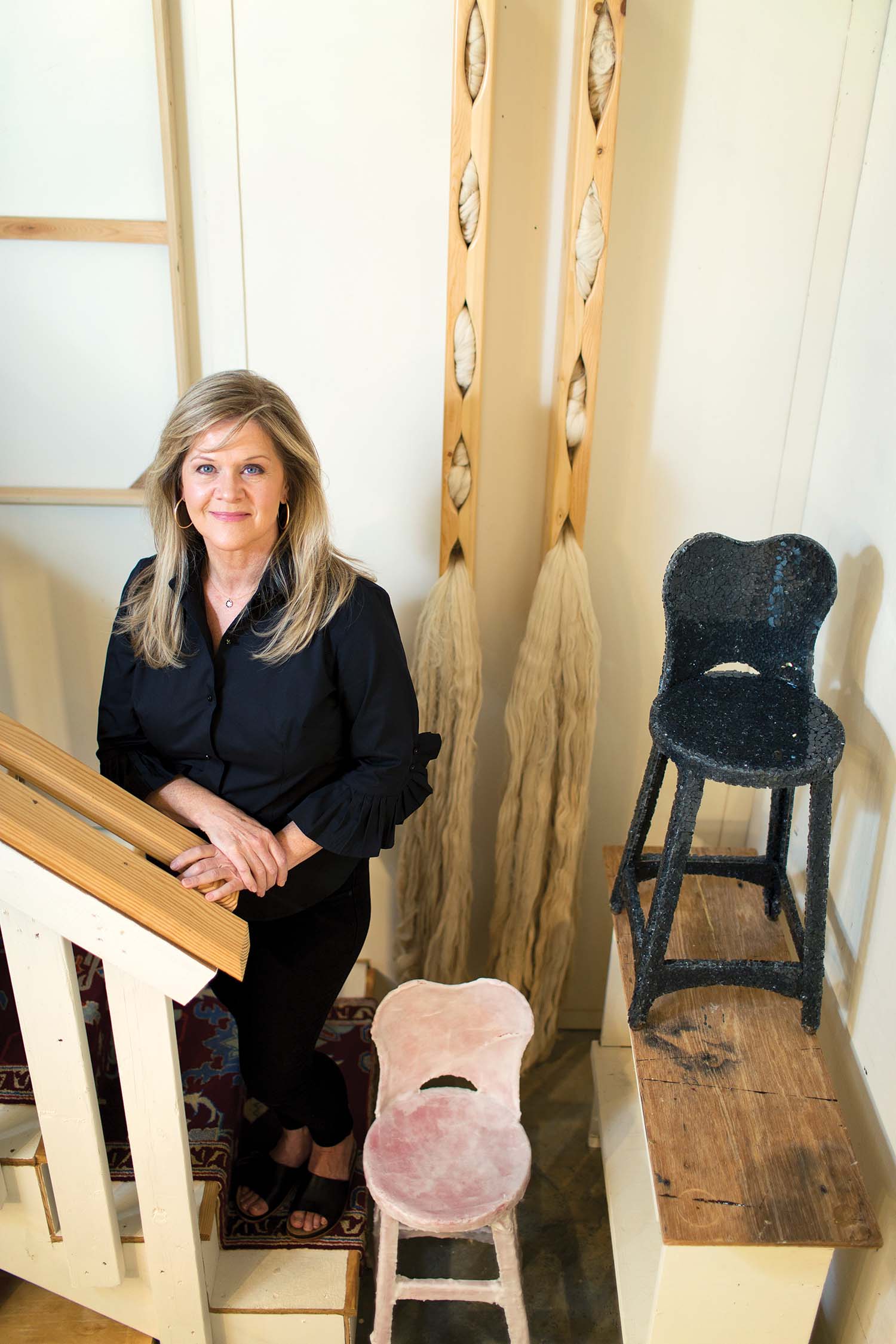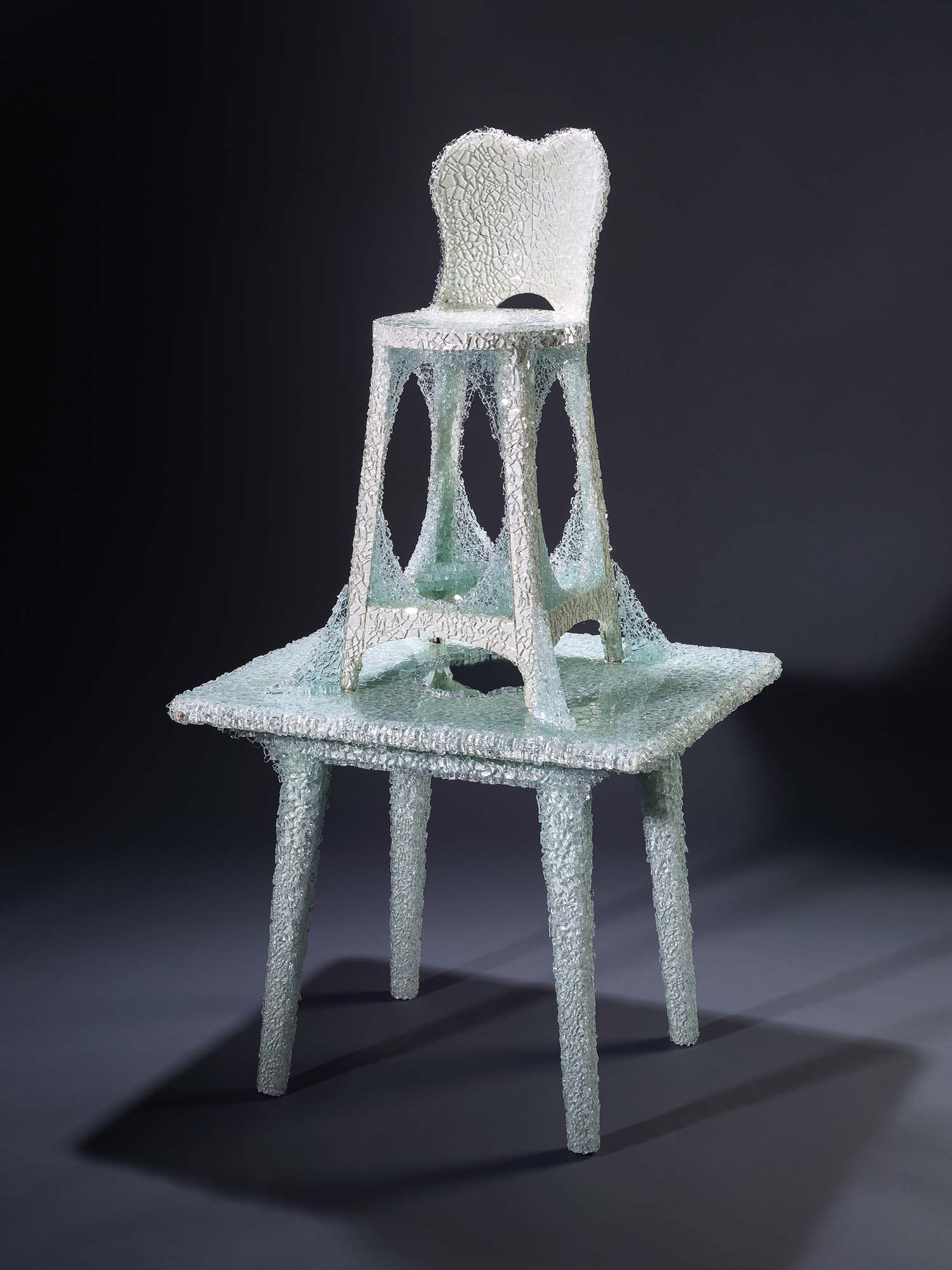
Portrait by Matt Rose
In an age when long-accepted boundaries of gender and politics are in flux, it’s not shocking that painting can burst out of its traditional two dimensions. Asheville artist Gwen Bigham made the discovery during her studies at Winthrop University, when she encountered the three-dimensional creations of Jessica Stockholder, who’s known for her large-scale, bright installations.
“I knew I wanted to create in a way that gave the viewer the physical experience of moving through space,” Bigham says. “I saw how I could come off the wall.”

Household items such as chairs, ladders, even corsage pins, along with a variety of fabric, constitute the recycled elements of Bigham’s work. “I use found objects as a metaphor for a particular concept,” she says. Works in fiber, for example, use the cast-off thread from textile mills known as “slasher” thread.
“After it serves its purpose on the loom, it becomes rough and hard and is slashed from the loom to be recycled,” Bigham explains. It’s a potent reference to the lives of the women controlled by the South’s once-dominant textile industry. Depending on what each loom is used for, the slasher thread can be soft and silky or coarse and stiff. The two types of thread arrive mixed together in 400-pound bales at whichever site Bigham is working, ready to be unraveled by hand.

Larger pieces may be built around salvaged ladders, stools, and chairs. The chairs are especially prominent, a remnant of Bigham’s childhood when she gave chairs individual personalities and imagined them as people. The memory was stirred when she began noticing ubiquitous small, mass-produced metal chairs that seemed to have been hiding in plain sight. “Each of the chairs looked like they had gone through such differing experiences,” she recalls. “Some had layers of paint, or were just beautifully rusted. But they were all imperfect, and because of their scale and shape, I saw them as quiet, unassuming women — the kind that can be easily ignored.”
One of her most widely exhibited pieces, Vanity, is dominated by just such a chair, set atop a table, with both pieces of furniture draped in tiny pieces of broken glass that Bigham glued gingerly by hand. Far from being unassuming, the chair and table represent risk and bravado. “It was dangerously beautiful, and that was what I was going for,” says Bigham.

Even more physically challenging was the large-scale, fabric-based piece Laid to Waste, assembled in an abandoned South Carolina textile mill. The facility had no electricity, but the biggest obstacle was draping a huge, cube-shaped textile form from the ceiling. “I had to climb a scary little access stair and then walk across open rafters,” Bigham recalls. “That installation has quite a few stories.”
These days, Bigham is increasingly focusing on abstract paintings, and doesn’t always endanger herself to get art done. Even so, she insists she “loves the physicality” of working on a piece. “My work is quiet, though upon deeper investigation, the ideas hopefully create an illusion of wonder while hiding secrets.”
Gwen Bigham will exhibit her work as part of the Beaverdam Studio Tour in North Asheville, happening Saturday, Oct. 27 (10am-5pm) and Sunday, Oct. 28 (12-5pm). See beaverdamstudiotour.com for more information. The artist also arranges studio visits by appointment: call 704-516-7217 or e-mail bigham.g@gmail.com. www.gwenbigham.com.
